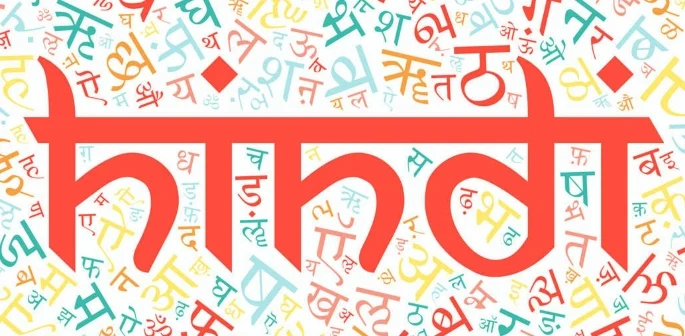In the Hindi language, the phrase “Who are you?” translates to “तुम कौन हो?” (tum kaun ho?). Understanding the meaning of this phrase in Hindi provides insights into the language and its cultural nuances. Hindi, one of the official languages of India, holds immense significance and exploring its expressions adds to our understanding of the language.
KEY POINTS
The Importance of Language and Culture
Language and culture are deeply intertwined, serving as the gateway to understanding a community’s identity, history, and traditions. By delving into the meaning of expressions in different languages, we gain valuable insights into the people who use them and the society they belong to. Hindi, being one of the most widely spoken languages in India, carries profound cultural significance.
Understanding the Phrase “Who are you?” Meaning in Hindi

Translation and Pronunciation
The question “Who are you?” is translated into Hindi as “तुम कौन हो?” (tum kaun ho?). In this translation, “तुम” (tum) represents the informal form of “you,” while “कौन हो?” (kaun ho?) translates to “who are.” Hindi is a phonetic language, and to correctly pronounce the phrase, one can follow this pronunciation guide: [tum kaun ho?].
Contextual Significance
Although the literal translation remains the same, the contextual significance of the phrase “Who are you?” in Hindi varies based on the situation and the relationship between the speaker and the listener. It can be used in various scenarios, such as when meeting someone for the first time, when someone’s identity is unclear, or when someone is being asked about their role or position.
Exploring Cultural Expressions of Identity in Hindi

Formal and Informal Usage
Hindi, like many other languages, distinguishes between formal and informal forms of address. The pronoun “तुम” (tum), used in the earlier translation of “Who are you?,” represents the informal form. In more formal contexts or when addressing someone with respect, the pronoun “आप” (aap) is used. It is essential to be aware of the appropriate level of formality based on the situation and the person you are conversing with.
Respect and Addressing Hierarchy
Indian culture places great importance on showing respect to elders and authority figures. When addressing someone older or in a position of authority, it is customary to use appropriate honorifics. The usage of honorifics ensures a respectful tone in conversations and reflects the cultural norms and values.
Gender and Politeness
The Hindi language includes gendered nouns and pronouns, which can influence the expression of identity. When asking “Who are you?” to a male, the question remains the same. However, when addressing a female, it changes to “तुम कौन हो?” (tum kaun ho?). This distinction highlights the gender-specific nature of language and its impact on communication.
Common Phrases Related to Identity in Hindi
Introducing Yourself: “मैं…हूँ” (Main…hoon)
To introduce yourself in Hindi, you can use the phrase “मैं” (main), followed by your name or any other identifier, and then “हूँ” (hoon) to indicate “am.” For example, “मैं आदित्य हूँ” (Main Aditya hoon) means “I am Aditya.”
Asking Someone’s Name: “आपका नाम क्या है?” (Aapka naam kya hai?)
To inquire about someone’s name, you can use the phrase “आपका नाम क्या है?” (Aapka naam kya hai?). This question demonstrates politeness by using the formal pronoun “आप” (aap). It is a respectful way of inquiring about someone’s name.
Inquiring About Occupation: “आप क्या करते हैं?” (Aap kya karte hain?)
If you want to know someone’s occupation or what they do for a living, you can ask “आप क्या करते हैं?” (Aap kya karte hain?). This question helps initiate a conversation about professional identities and interests.
Language Learning and Cultural Exchange
Language learning serves as a bridge for cultural exchange, fostering understanding and building connections between diverse communities. Exploring the meaning of phrases like “Who are you?” in different languages opens doors to new connections and promotes appreciation for cultural diversity.
Embracing language diversity and engaging in conversations with people from various backgrounds allows us to learn from one another, broaden our perspectives, and cultivate meaningful relationships.
Conclusion
Understanding the meaning of “Who are you?” in Hindi reveals the intricacies of language and culture. Hindi, with its rich vocabulary and diverse expressions, provides insights into how identity is understood and communicated within Indian society. By delving into the linguistic and cultural nuances of Hindi, we bridge gaps, promote cultural exchange, and foster a deeper sense of connection with others.
Also Read: What is The Credit Meaning in Hindi? Credits and Their Importance
Frequently Asked Questions
In Hindi, you can say “तुम कौन हो?” (tum kaun ho?) to ask “Who are you?”.
Yes, Hindi is one of the most widely spoken languages in India and is recognized as an official language of the country.
Yes, Hindi distinguishes between formal and informal forms of address. “तुम” (tum) is the informal form, while “आप” (aap) is the formal form used to show respect.
Yes, Hindi has gendered nouns and pronouns, which can influence how identity is expressed. The language reflects gender-specific nuances in communication.
Language learning enables individuals to connect with people from different cultures, fostering mutual understanding, and promoting cultural exchange. It allows us to delve into the depth of a language and gain insights into the associated culture.



